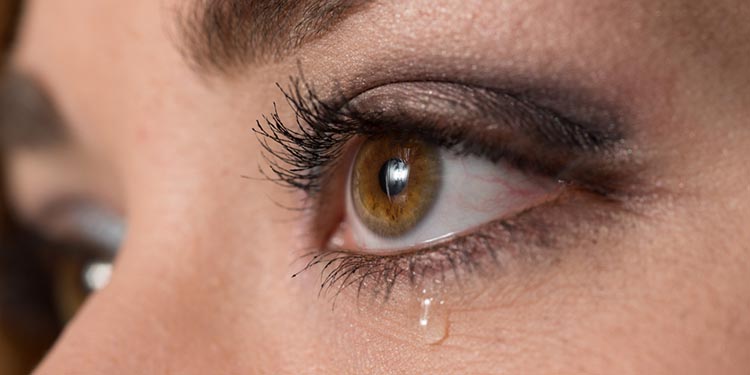Though tears are most often associated with sadness, the truth is that your eyes produce them constantly. When everything is operating normally, the lacrimal glands above each eye release a flow of lubrication to wash away debris and keep you comfortable. The liquid moves across your eyes and drains into small holes where the upper and lower lids meet near your nose. From there, tears make their way to the nasal passages.
Strong emotions often bring tears in such quantity that they spill out of your eyes. However, when tears spill over frequently with no connection to how you are feeling, there may be a drainage problem. This condition is known as blocked tear duct. Unfortunately, if not treated right away, an overflow of tears is not the only symptom you will notice. Bacteria often become trapped in blocked tear ducts, leading to infection. As a result, you may experience redness, tenderness and swelling in the area, along with fever, blurred vision and excessive eye mucus.

What Causes Blocked Tear Ducts?
It is not uncommon for infants to be born with blockages in either or both tear ducts. Estimates range from 6 percent to as many as 20 percent of babies born with this congenital condition. Babies born with abnormal bone structure in the skull and face may also have tear duct trouble – for example, children with Down’s Syndrome.
If you develop a blocked tear duct as an adult, pinpointing the underlying cause is critical. Often, an unrelated infection or swelling in the area can obstruct your tear duct, or you can develop an obstruction as a result of nasal polyps. Certain age-related changes to your body occasionally contribute to tear duct blockages, and in rare cases, an injury or a tumor may be responsible for the issue.
If you are having symptoms associated with blocked tear ducts, your ophthalmologist will use a series of tests to confirm the diagnosis and underlying cause before exploring treatment options. The easiest test is done by flushing tear ducts with a special solution. If the duct is clear, you will be able to taste the liquid in your throat. In more complex situations, your ophthalmologist may request that you have an x-ray or CT scan of the area.
Treating Blocked Tear Ducts
A diagnosis of blocked tear ducts in newborns may not require immediate treatment. In many cases, the condition resolves without intervention, and your baby’s ophthalmologist may recommend close monitoring for several months to see whether the tear ducts clear on their own before taking action. During this period, it is important to keep the area clean to prevent eye infections. If tear ducts remain blocked, many infants are successfully treated using a probing procedure. If this treatment is not effective, an alternative surgical solution may be recommended.
Treating blocked tear ducts in adults is highly dependent on the underlying cause of the issue. If an infection, inflammation, or swelling is responsible for the obstruction, a simple course of antibiotics may solve the problem. Growths, injuries, or structural issues may need to be corrected through more complex treatments, such as surgery.
Regular eye exams are important for catching small problems before you begin to experience symptoms, and a thorough exam by your ophthalmologist is critical if you notice anything unusual about your eyes or your vision.
Posted December 15, 2017 by Silverstein Eye Centers